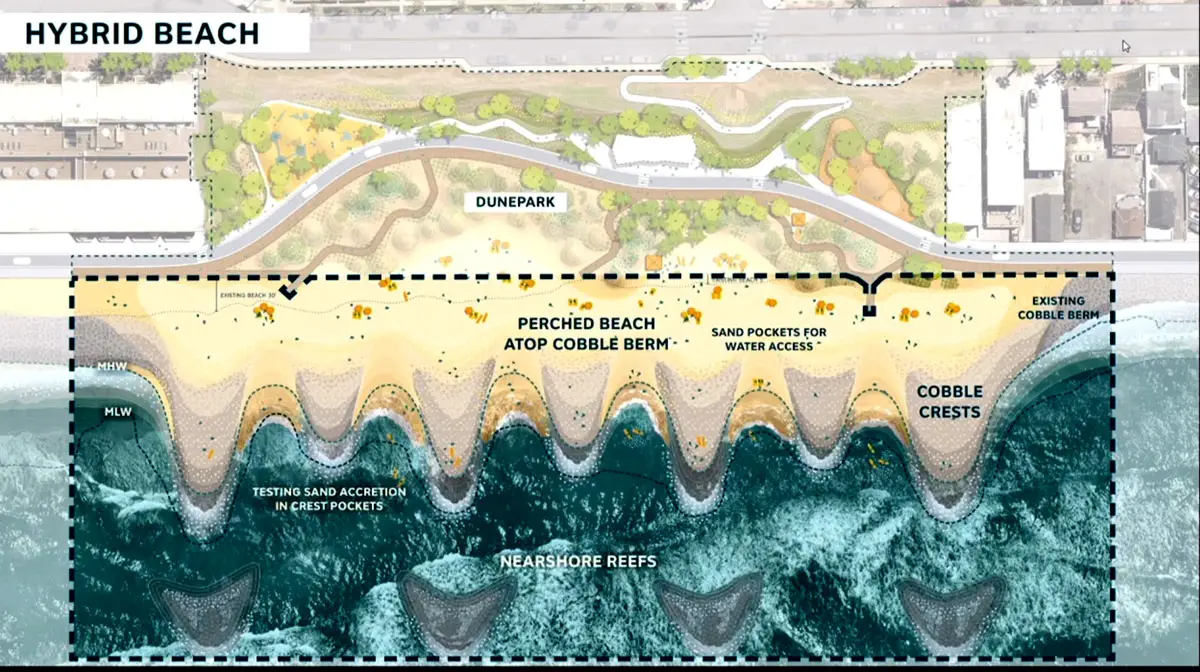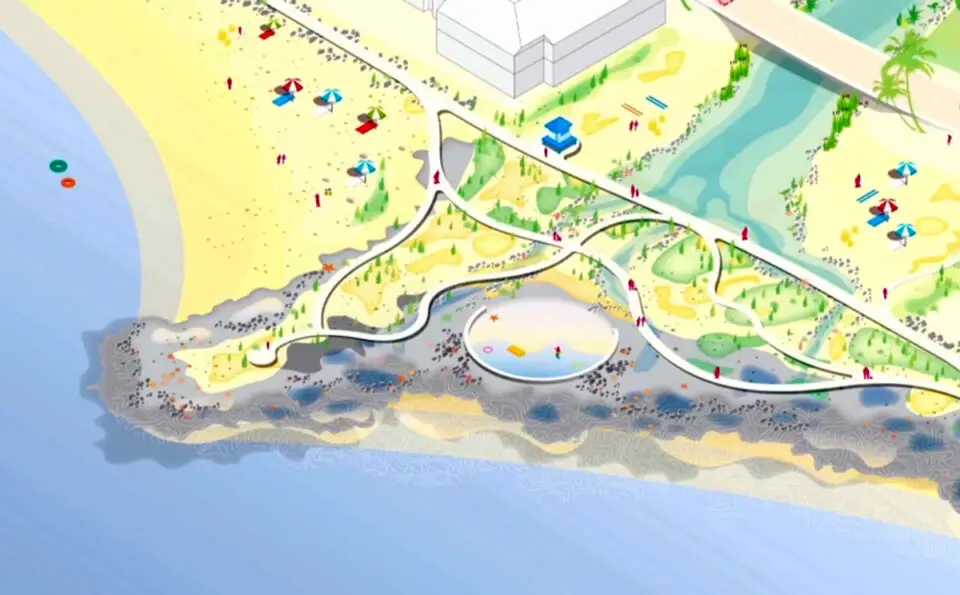OCEANSIDE — Over the next few weeks, a team of jurors will choose one of three final concepts meant to fix the city’s diminishing shoreline, recommending their selection to the Oceanside City Council for implementation in January.
Earlier this year, the city began its Coastal Resilience Design Competition, or RE:BEACH, in partnership with Resilient Cities Catalyst and GHD firms. Three engineering firms from around the world were chosen as the competition’s finalists, tasked with creating an innovative design that both nourishes and retains sand on Oceanside’s beaches.
The design teams – New York City-based SCAPE Landscape Architecture with ESA and the Dredge Research Collaborative, Netherlands-based Deltares USA and MVRDV, and Australian-based International Coastal Management – presented their developing concepts at three workshops throughout the fall.
After gathering feedback from residents, the teams presented their final designs to both jurors and the public at a Dec. 13 workshop in the Junior Seau Beach Community Center.
Deltares proposed its “Green Dream Peninsula,” consisting of a sandy peninsula jutting out seaward from Buccaneer Beach. The peninsula would have a rocky core of small and large rocks and a spine of quarry run that would help grip the sand on top.
The project would require 300,000 cubic yards of sand, with 200,000 going toward the top and 100,000 at the bottom of the peninsula.
According to team representatives, the design would slow down the natural movement of sand up and down the coastline to retain and nourish sand on the peninsula. The design would preserve surfing conditions while also creating new habitats for local wildlife and plants.
The concept would create five new habitats: sandy beach, sandy dune habitat, coastal wetland, intertidal habitat and subtidal habitat. The mouth of the Loma Alta Creek would feed into the coastal wetland area as it moves toward the ocean.

Other amenities as part of the project include boardwalks and a tidal pool, which would provide more recreational opportunities for beach visitors.
Though parts of the project can be phased in, the overall cost for the Green Dream Peninsula would be around $11 million. If chosen, the concept could be replicated several times between the Oceanside Pier and the Buena Vista Lagoon, representatives noted.
Next was International Coastal Management (ICM), which proposed replicating a successful beach retention strategy used along Australia’s Gold Coast.
Referred to as a “living speed bump,” ICM’s approach would recreate a headland with a low, permeable berm extending into the surf zone at Tyson and Wisconsin Street beaches that would stabilize the top of the beach, help create dunes and allow people to walk around the headland at low tide. At the same time, nearshore sand nourishment paired with an eco-engineered reef would support the bottom of the beach by improving sandbar retention and reducing beach erosion.
Like Deltares, ICM’s option would also restore biodiversity in the area by providing new spaces for organisms to settle.
Aaron Salyer, principal engineer and director of ICM, recalled how a previous similar project in the United Arab Emirates helped create a habitat for the hamour, a type of fish thought to be at risk for endangerment.
According to team representatives, this option would also slow down — not obstruct — natural sand movement up and down the coast while also improving surfing conditions.

The same approach helped restore the Gold Coast, whose beaches experienced large sand loss by the 1970s until the “living speed bump” design was implemented. Salyer hopes to bring Australia’s 40 years’ worth of experience managing the speed bump approach to Oceanside.
“We know it works and we know it will work here,” Salyer said.
The project is expected to cost around $31.4 million, with an anticipated $500,000 in annual maintenance.
SCAPE’s design builds off Oceanside’s existing cobble foundation to create an expanded, hybrid beach and dune park at Tyson Street. A perched 60- to 100-foot sandy beach on top of cobble berms extends seaward, supported by undulating cobble crests and nearshore reefs, according to the concept.
According to representatives, the crests reduce the erosive force from waves and help keep pockets of sand in between them.
At the same time, the concept would create sand dunes by relocating the Strand back several yards, which would remove the road from exposure to waves while also creating space for a dune park with various recreational amenities, including play structures and boardwalks. The dunes would also help to nourish the concept’s perched beach.
Like the other concepts, SCAPE’s design also proposes restoring various native habitats that both protect the beach and add biodiversity to the area.




